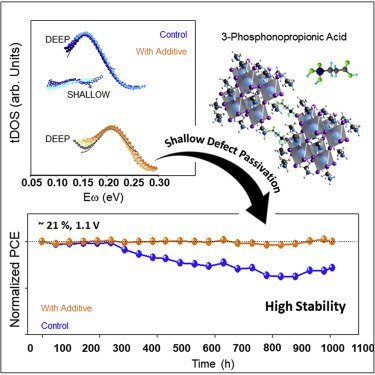Decoupling the effects of defects on efficiency and stability through phosphonates in stable halide perovskite solar cells
Haibing Xie, Zaiwei Wang, Zehua Chen, ..., Michael Gratzel,
Anders Hagfeldt, Monica Lira-Cantu et al.
Joule Volume 5, Issue 5, 19 May 2021, Pages 1246-1266
doi.org/10.1016/j.joule.2021.04.003
Add H3pp to perovskite to improve performance while maintaining high efficiency (21% maintained after 1000 h @ MPP).
Perform various characterization and simulation techniques to demonstrate that the addition of H3pp leads to a passivation of the shallow defects, which are not affecting the performance but the device stability."
Voc vs L was performed using Paios to demonstrate negligible difference in n_id -> no difference in SRH.
C-f was carried out to demonstrate an effective reduction in ion migration and charge accumulation in the better device.
TPC and OCVD confirm negligible changes in the charge transport mechanism.

